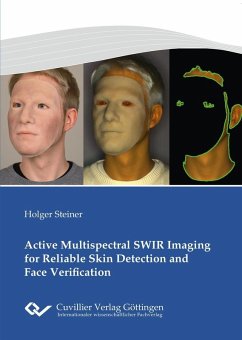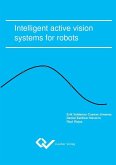The detection of human skin in images is a very desirable feature for applications such as biometric face recognition, which is becoming more frequently used for, e.g., automated border or access control. However, distinguishing real skin from other materials based on imagery captured in the visual spectrum alone and in spite of varying skin types and lighting conditions can be dicult and unreliable. Therefore, spoofing attacks with facial disguises or masks are still a serious problem for state of the art face recognition algorithms.
This dissertation presents a novel approach for reliable skin detection based on spectral remission properties in the short-wave infrared (SWIR) spectrum and proposes a cross-modal method that enhances existing solutions for face verification to ensure the authenticity of a face even in the presence of partial disguises or masks. Furthermore, it presents a reference design and the necessary building blocks for an active multispectral camera system that implements this approach, as well as an in-depth evaluation.
The system acquires four-band multispectral images within T = 50ms. Using a machine-learning-based classifier, it achieves unprecedented skin detection accuracy, even in the presence of skin-like materials used for spoofing attacks. Paired with a commercial face recognition software, the system successfully rejected all evaluated attempts to counterfeit a foreign face.
Dieser Download kann aus rechtlichen Gründen nur mit Rechnungsadresse in A, B, BG, CY, CZ, D, DK, EW, E, FIN, F, GR, HR, H, IRL, I, LT, L, LR, M, NL, PL, P, R, S, SLO, SK ausgeliefert werden.









